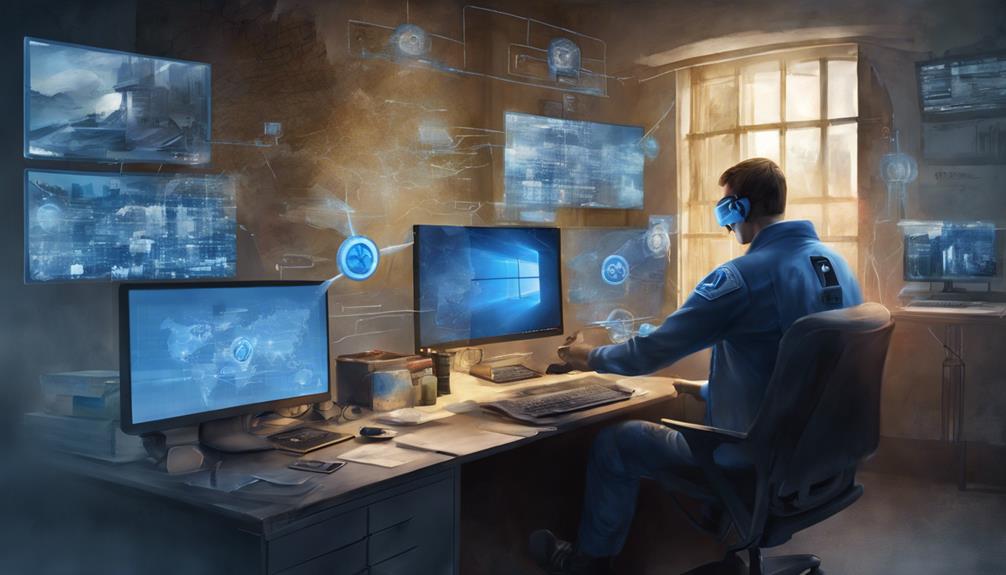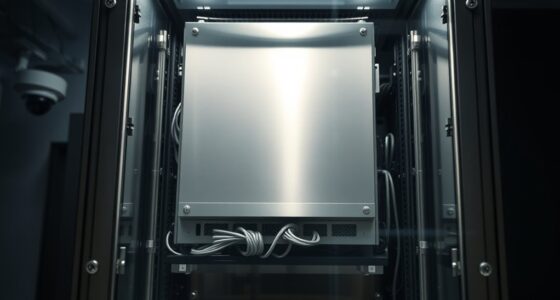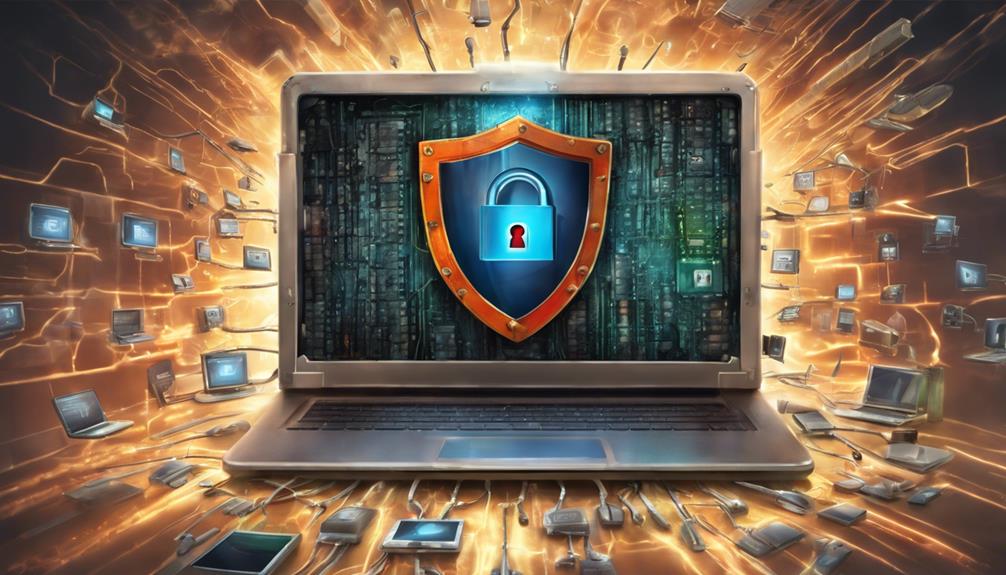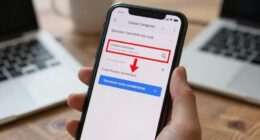MFA fatigue attacks occur when cybercriminals overwhelm you with repeated push notifications, tricking you into approving unauthorized access. They often steal credentials through phishing or social engineering, then flood your device with prompts to exhaust your patience. Recognizing sudden spikes in MFA requests or suspicious login locations helps identify these attacks. To defend, you can limit notifications, shift to more secure methods, and add geolocation checks. Continue exploring for effective ways to strengthen your MFA defenses today.
Key Takeaways
- MFA fatigue attacks flood users with push notifications, exploiting human psychology to approve malicious login attempts.
- Recognize signs like multiple unexpected MFA prompts, odd timing, or location anomalies indicating potential fatigue attacks.
- Limit MFA notifications, replace push alerts with TOTP, and disable automatic approvals to reduce attack success.
- Implement geolocation, device fingerprinting, and behavioral analysis to verify login legitimacy and detect anomalies.
- Regularly review MFA policies, adopt advanced authentication methods, and incorporate risk-based controls for stronger security.
Understanding How MFA Fatigue Attacks Work
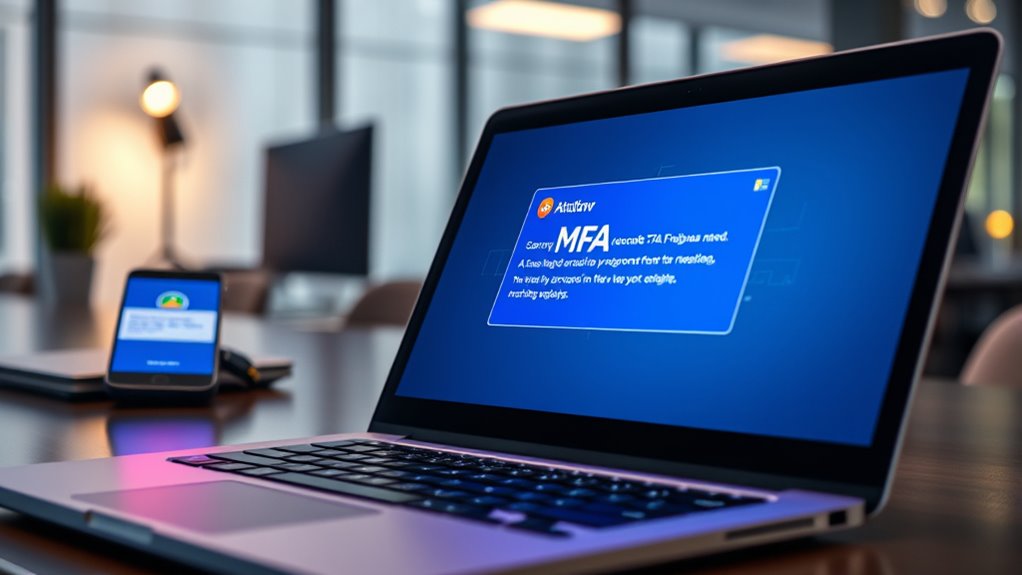
MFA fatigue attacks work by overwhelming you with a flood of push notifications, prompting you to approve login attempts without fully understanding the threat. Attackers start by stealing your legitimate credentials through phishing, social engineering, or purchasing them on the dark web. Once they have your username and password, they initiate multiple login attempts, each triggering a push notification to your device. These repeated alerts create a barrage, often numbering in dozens or hundreds, designed to exhaust your patience or cause confusion. Exploiting your tendency to approve quick responses, attackers rely on social engineering and psychological manipulation. The goal is to trick you into approving a malicious login, granting them access to your account without needing to bypass the MFA system itself. Understanding how high refresh rates can improve your device’s responsiveness may help you better recognize suspicious activity.
Recognizing the Signs of MFA Fatigue Exploitation
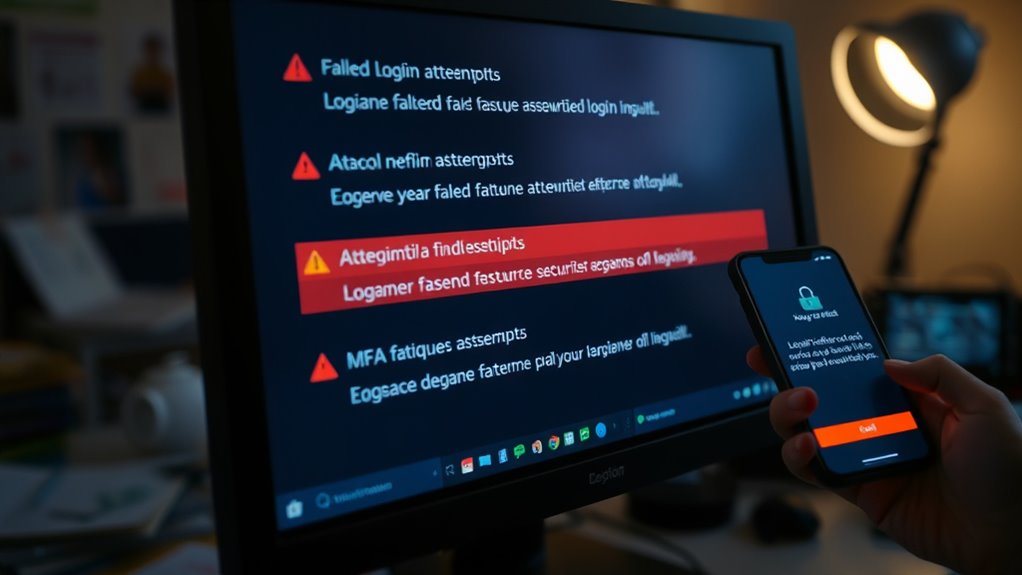
Detecting MFA fatigue exploitation requires paying close attention to unusual patterns in your authentication requests. Look for sudden spikes in MFA push notifications or multiple prompts without legitimate login attempts—they’re critical alert signs. Repeated MFA requests in quick succession aim to overwhelm and fatigue you. Monitoring request volume per user helps identify abnormal activity. Attacks often leverage social engineering techniques such as phishing and impersonation to trick users into approving unauthorized access. Watch for irregular timing, such as MFA prompts arriving late at night or during off-hours, which often indicate malicious activity. Geographical anomalies, like login attempts from unrecognized locations or impossible distances, are red flags. Also, unusual devices or IP addresses suggest compromise. Recognizing these patterns early can prevent unauthorized access and protect sensitive information.
Key Risks and Real-World Examples of MFA Fatigue Attacks
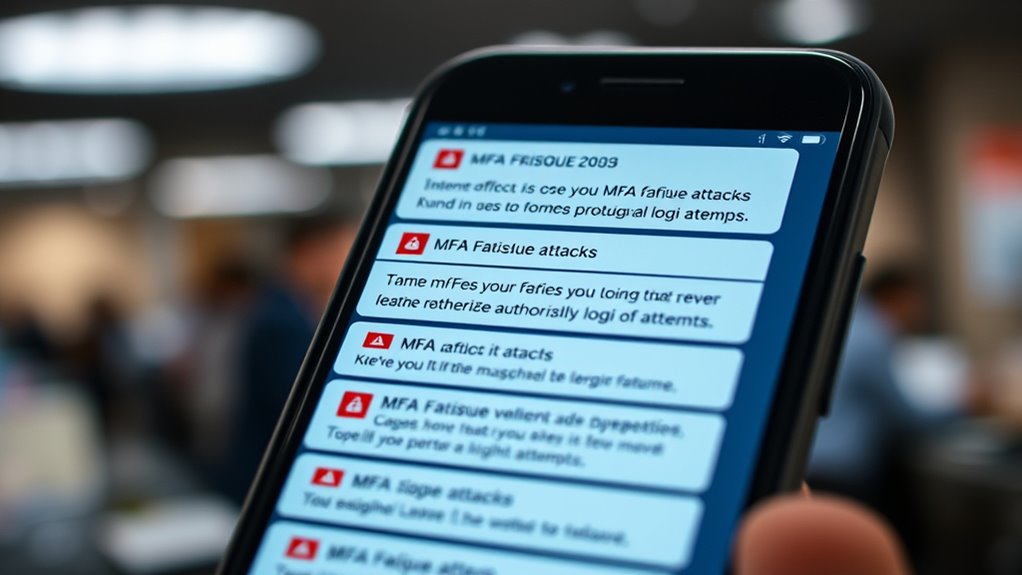
The risks posed by MFA fatigue attacks are significant because they exploit human vulnerabilities rather than technical flaws, making them especially dangerous. Attackers often start by stealing valid credentials through phishing, dark web sales, or malware. They then bombard users with repeated MFA push notifications, causing alert fatigue, frustration, and distraction. This increases the likelihood of users mistakenly approving malicious requests, granting attackers unauthorized access, lateral movement, and privilege escalation within networks. Once inside, they can steal data, damage reputation, or launch further attacks like identity theft or espionage. Research shows that MFA fatigue can lower user alertness, leading to more mistakes. Real-world examples highlight these dangers: Uber’s breach involved contractor credentials and social engineering, while Cisco’s attack combined MFA fatigue with vishing, leading to network infiltration. These incidents reveal how MFA fatigue can severely compromise organizational security.
Immediate Strategies to Block MFA Fatigue Attacks

Implementing immediate measures is vital to prevent MFA fatigue attacks from compromising your organization’s security. Start by limiting MFA notifications, restricting prompts per user, and replacing push notifications with stronger methods like TOTP or challenge-response. Adopt single sign-on (SSO) to reduce prompt frequency and use web authenticators compatible with your devices. Remove automatic “approve” options, requiring explicit user actions for each MFA request. Enhance MFA context by adding geolocation and device fingerprinting checks to verify if login attempts are legitimate. Analyze behavioral patterns and session history to identify anomalies. Employ risk-based authentication and adaptive methods to adjust verification strictness based on the login risk. These steps reduce attack surfaces and help prevent fatigue-driven breaches effectively. Understanding MFA Fatigue Attacks is essential for designing effective mitigation strategies and educating users about these threats. Additionally, regularly reviewing and updating MFA policies helps ensure your defenses stay resilient against evolving tactics and strengthens overall security posture.
Enhancing Your MFA Security Posture With Quick Wins

Enhancing your MFA security posture with quick wins begins by developing strategic policies that align with industry standards like NIST guidelines. This means implementing MFA across all critical access points, including remote users, privileged accounts, and legacy systems, to close security gaps. Clearly specify which systems and data require MFA, and enforce consistent application organization-wide. Regularly review and update these policies to stay ahead of new threats and regulatory changes. Periodic policy reviews can help ensure your security measures adapt to evolving tactics. Integrate MFA rules into incident response plans to improve detection and response during security events. Conduct exhaustive risk assessments to identify high-priority assets and vulnerable access points. Prioritize deploying advanced, phishing-resistant technologies like FIDO2 passkeys and biometric verification, ensuring your MFA setup remains robust and adaptable to evolving threats. Continuous policy review ensures your security measures stay effective against emerging tactics.
Frequently Asked Questions
Can MFA Fatigue Attacks Target Specific Industries or Organizations More Frequently?
Yes, MFA fatigue attacks target specific industries more often, especially those holding valuable data like finance, healthcare, and tech firms. These sectors often face higher attack volumes because of their large user bases, sensitive information, and critical services. Attackers exploit user impatience through repeated MFA requests, especially where staff are less trained. Knowing your industry’s vulnerabilities helps you implement targeted measures to defend against these persistent and disruptive attacks.
What Are the Legal Implications for Organizations Suffering MFA Fatigue Breaches?
Did you know that over 60% of organizations have faced MFA-related security incidents? When you suffer an MFA fatigue breach, you face serious legal risks. You could be penalized for non-compliance with data privacy laws like GDPR, face breach notification requirements, and risk reputational damage. These legal issues might lead to hefty fines, increased scrutiny, and long-term trust erosion, making it essential to proactively strengthen your security measures.
How Do Attackers Determine the Optimal Timing for MFA Fatigue Campaigns?
You might wonder how attackers pick the best time for MFA fatigue attacks. They gather intelligence on user activity patterns through social media, leaked calendars, or OSINT tools, then identify when users are less vigilant—like evenings, weekends, or during shift changes. By timing their prompts during these moments, they increase the chances of users approving requests out of distraction or fatigue, boosting their chances of breaching accounts.
Are There Specific MFA Methods More Resistant to Fatigue Attacks?
You might wonder which MFA methods resist fatigue attacks best. Hardware security keys stand out because they require a physical device and cryptographic verification, making them highly resistant to automated fatigue tactics. Authenticator apps with manual code entry are also stronger, as they demand user involvement and reduce blind approvals. These methods make it harder for attackers to succeed, especially when combined with user training and additional verification layers.
How Can Organizations Train Staff to Recognize and Avoid MFA Fatigue Scams?
Did you know 80% of data breaches involve compromised credentials? To avoid MFA fatigue scams, you should train staff to spot unusual or repeated MFA prompts, and never approve unexpected requests without verification. Encourage reporting suspicious activity immediately, teach secure MFA practices like number matching, biometric, or time-based codes, and use real-world examples during training. Regular awareness sessions help staff recognize and respond effectively to these threats.
Conclusion
Think of your security as a fortress, with MFA as its sturdy gate. MFA fatigue attacks are like cunning infiltrators trying to wear you down with endless calls and notifications. By recognizing the signs and acting quickly, you reinforce your defenses—like adding new locks and alarms. Stay vigilant, keep your guard up, and turn that once-weak gate into an unbreakable barrier. Your quick actions today protect your digital kingdom tomorrow.


